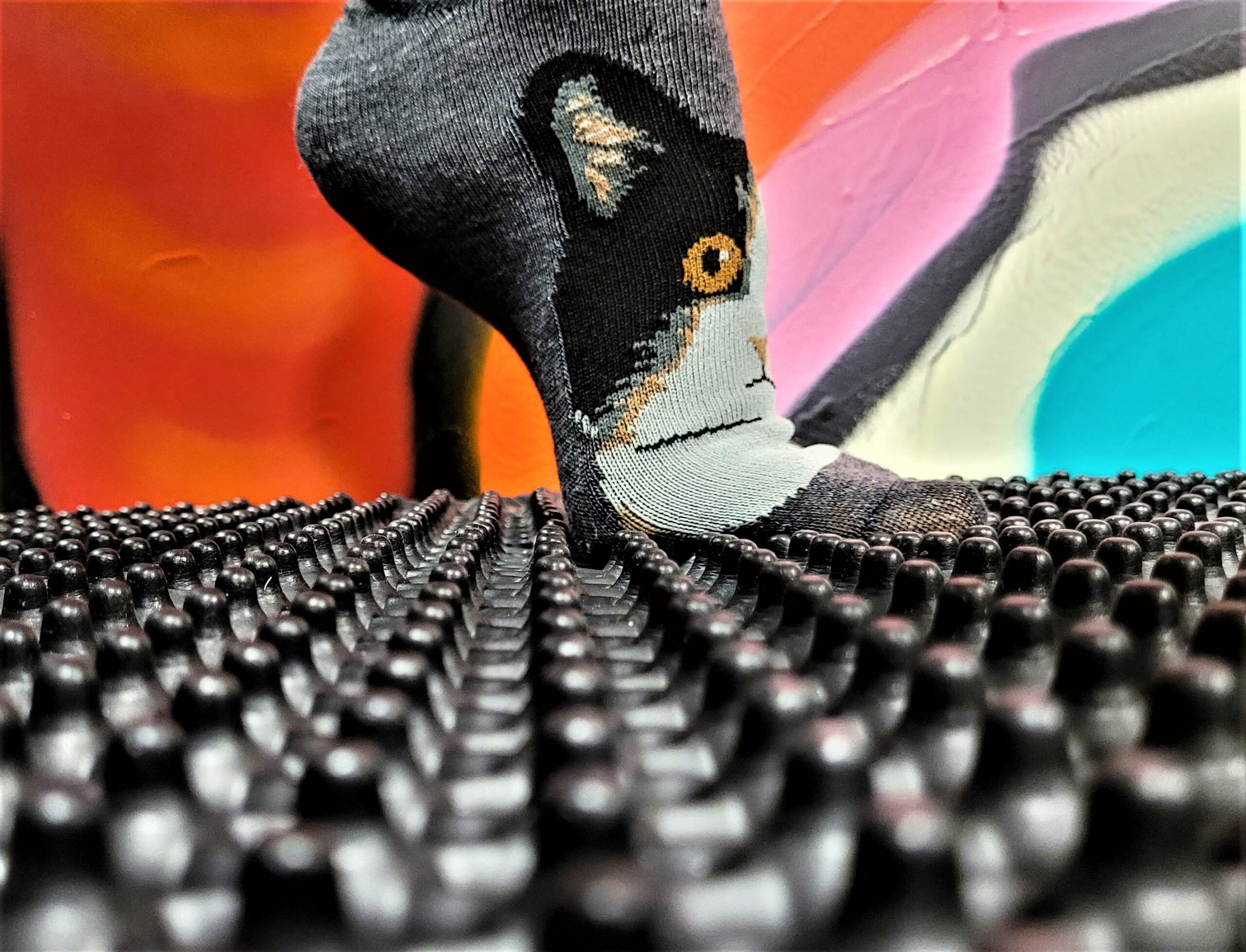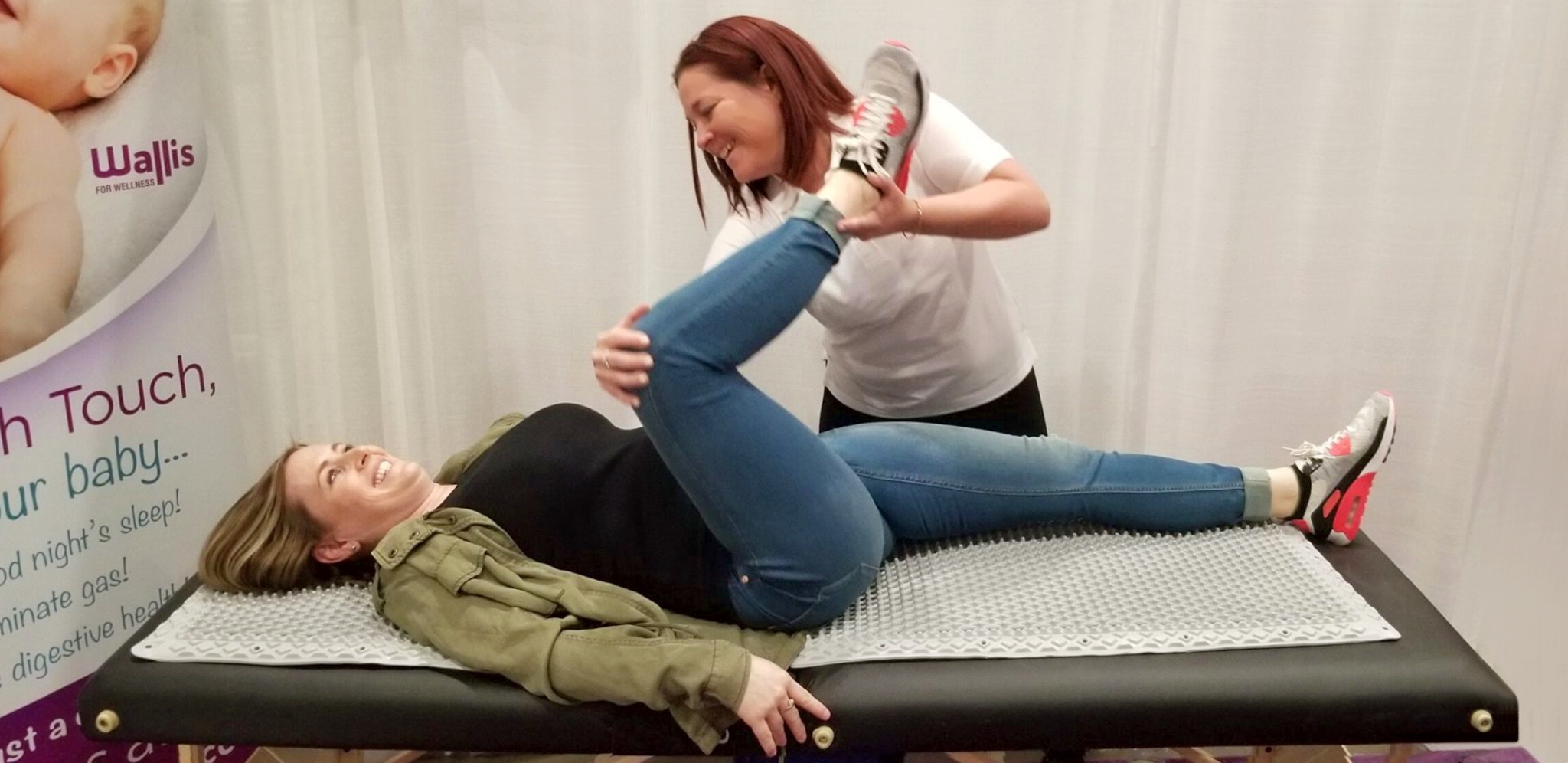If I were to ask you to think of someone that has great balance, you would likely answer with an Olympian gymnast; a downhill skier or competitive skater; maybe a yoga teacher, but not likely the average, everyday person. We rarely describe our friends as having “great balance” or “great posture”.
But we would likely be the first to point out when a person had “poor balance” or “poor posture”. We often find ourselves saying things like – “she slouches in her chair” or “he should sit up straight when he does his homework”! It comes as no surprise that people of all ages are known to slouch, stand with poor posture for periods at a time, stare at their cell phones too long with their necks in an awkward position, sit on chairs that compromise good posture without realizing the scary consequences until they move, and they feel pain. Some of you will remember cramming for exams in school and staying up all night hitting the books. At some point, we all agree that we would have to get up and walk around and stretch; and that the longer we sat with our neck bent into a book, the more stress we felt on our entire spinal cord. A great example is when you sit on a plane for hours for a long-haul flight; how many of you actually find yourself going to the washroom even when you don’t have to go as an excuse to get up from your seat and move around? Maybe even stand in the washroom and try to do rudimentary stretches in that confined space to open up your vertebrae and feel a bit of pressure release.
So let’s break it down a little more granularly. We likely all agree that good posture is important to balance. And proper posture achieved by good balance improves spine health. At the end of the day, you are in control because proper spinal alignment is a gift of good health that YOU can give to your body. When you stand and sit with your body in proper alignment, everything works better; your blood circulation is increased; your muscles, ligaments and tendons synchronize and your body is happy. And just as you can mis-train your body to slouch on the couch when you watch tv; or to lean to one side when you stand in a line putting pressure on one hip over the other, you can do the reverse, YOU can make a habit of using correct posture with your good postural alignment so that you are far less likely to experience leg, hip, back and neck pain.
How do you stand up straight? What should your body look like when you stand straight? And even more important, how do you actually sit straight? I know…. teachers have told us since grade school to “sit up straight in our chairs”! but I am not sure anyone ever actually showed us how to sit straight, more that it was some sort of scare tactic to get us to stop causing trouble and focus on the lesson.
So, when you stand correctly, your weight is centered over your feet, and in sequence -like the building blocks of a house, each successively higher joint finds its safe and neutral position for proper alignment; ankles, knees, hips, spine, and neck stacked on top of each other – this is called “centration”. When any joint is misaligned, it puts the others out of balance (side to side, and front to back). This is a principle called “tensegrity”.
Having all of this work properly also helps you maintain correc t form while moving, whether that is just walking or exercising and training for unique performance tasks such as a specific sport or even repetitive work, which results in fewer injuries and greater functional gains.
t form while moving, whether that is just walking or exercising and training for unique performance tasks such as a specific sport or even repetitive work, which results in fewer injuries and greater functional gains.
The surfaces that we sit and stand on contribute significantly to our body’s ability to manage the very complex task of sitting or standing upright; something that makes us uniquely human. Hard floors, shoes that are poorly designed to force our body into a certain standing position, seat surfaces with deep foam that actually cause our body to sink into unnatural positions and starve our body of positional awareness are often the culprits of poor posture. Surfaces on the other hand that stimulate peripheral nerves so that your brain has consistently better input to properly balance your body in 3D space can be heroes for preventing long term postural problems and pain. Somatosensory stimulation that provides proprioceptive awareness is a fundamental tenet of Sp1ke design. Hundreds of gentle tips in a vulnerable moving mesh are designed through biomimicry to provide you (and your brain that craves information) with all the input it requires to stand and sit properly. With this level of input, your brain functions autonomically to best align your entire skeleton at rest or in motion. Think about where you would rather sit or stand; on a concrete slab or on grass.
It’s really that simple – your brain needs high resolution stimulation to maintain proper posture and protect your body from pain.




